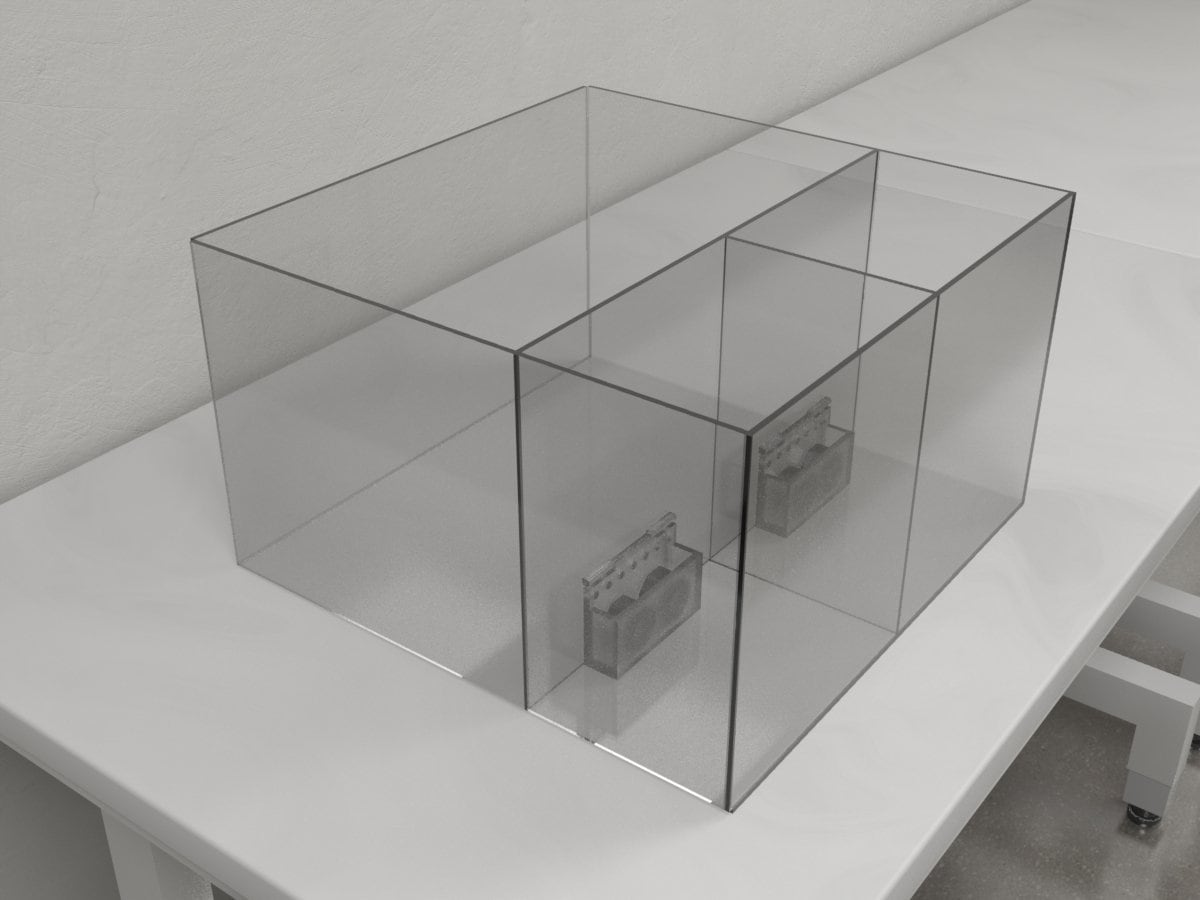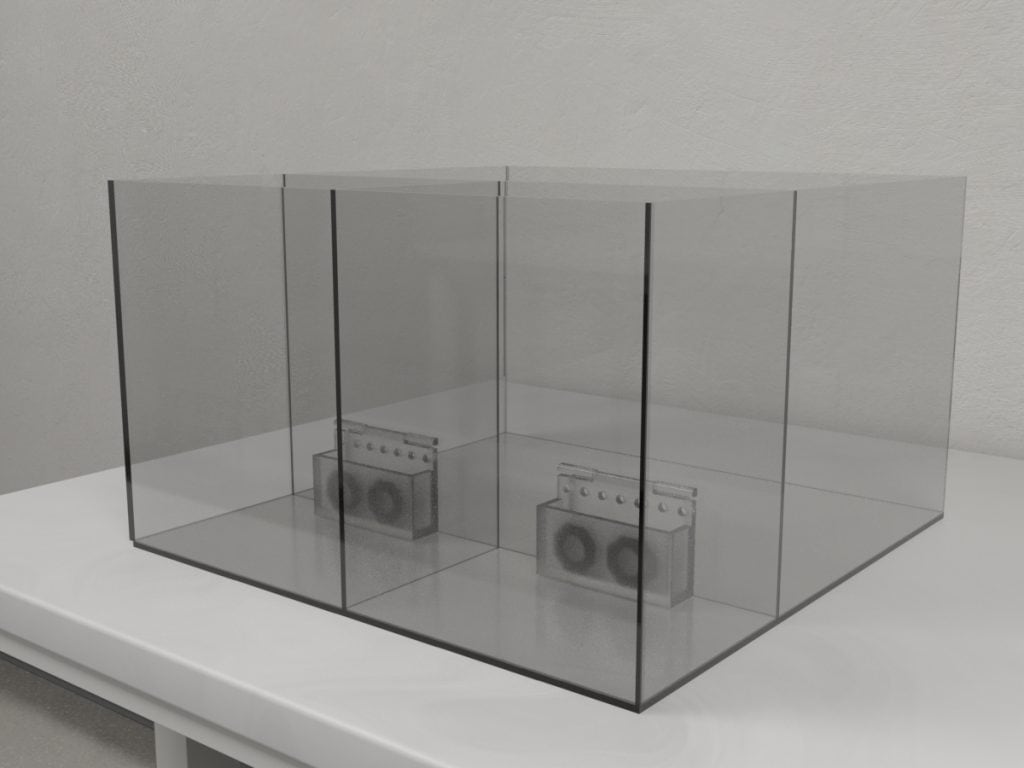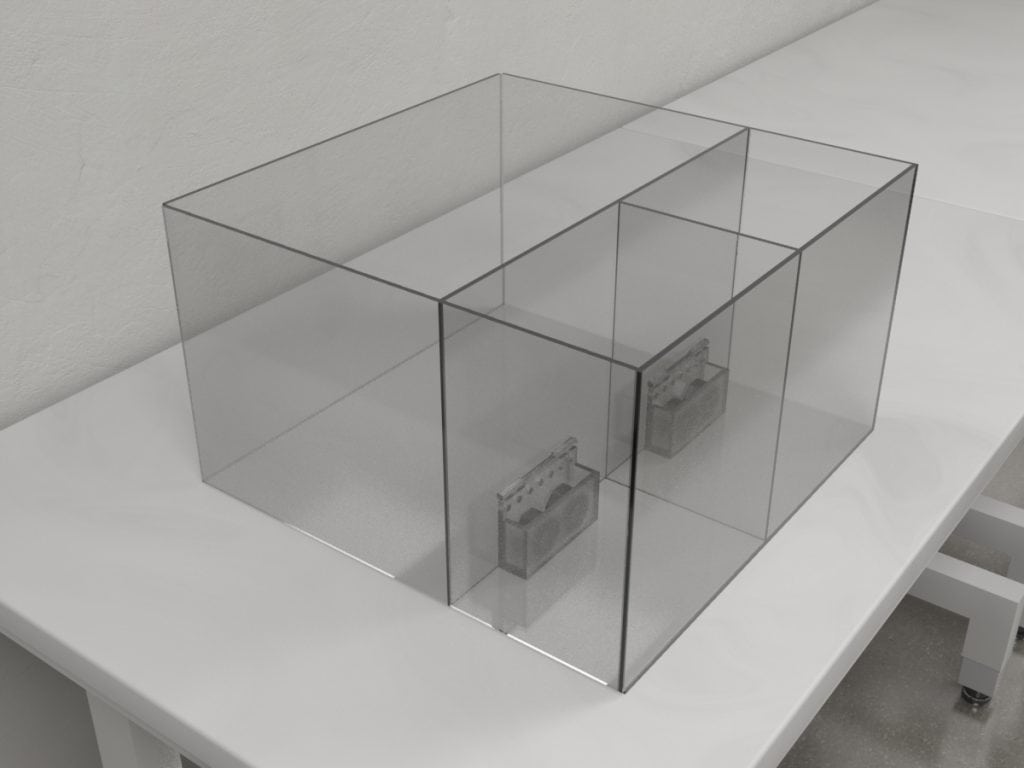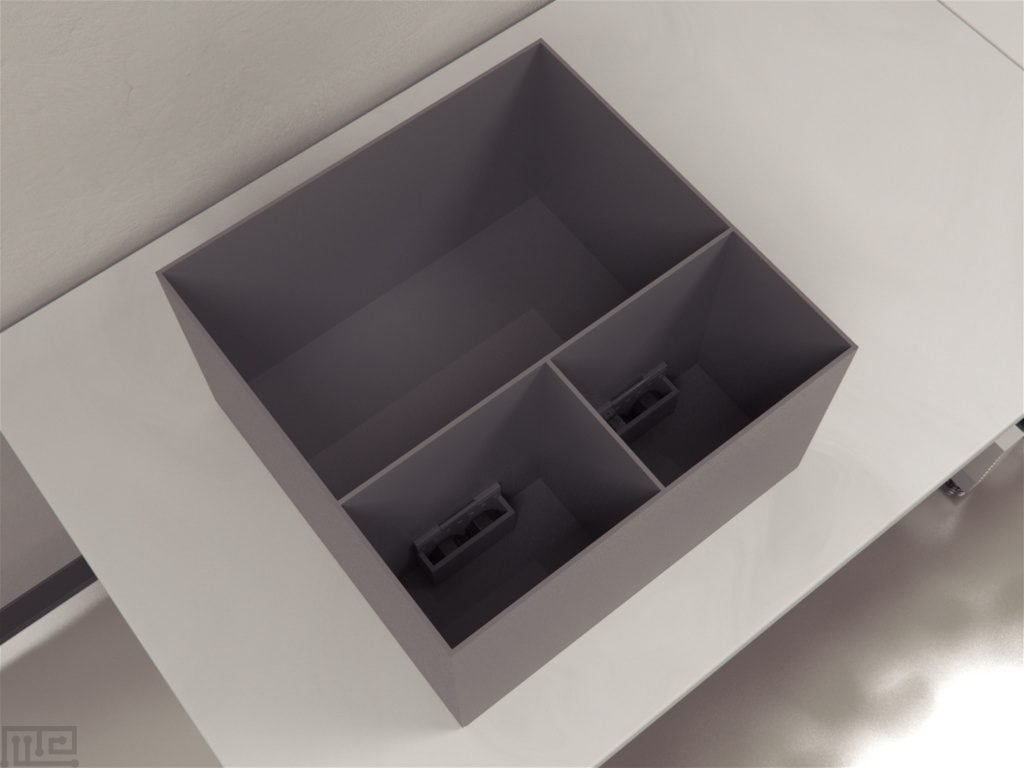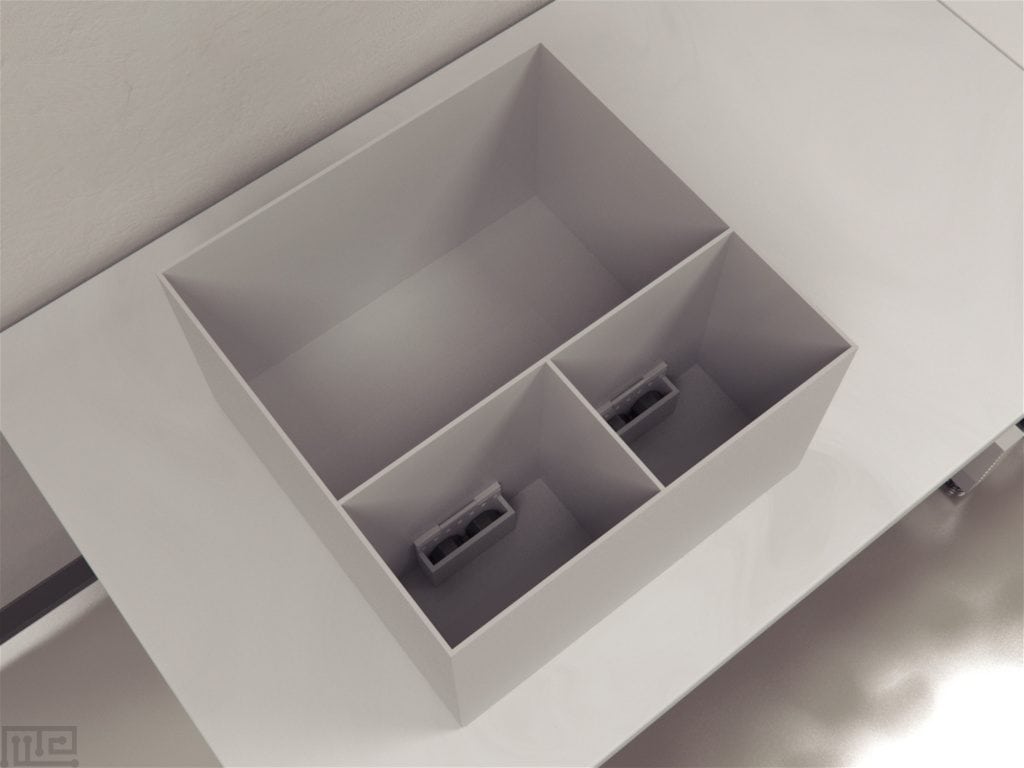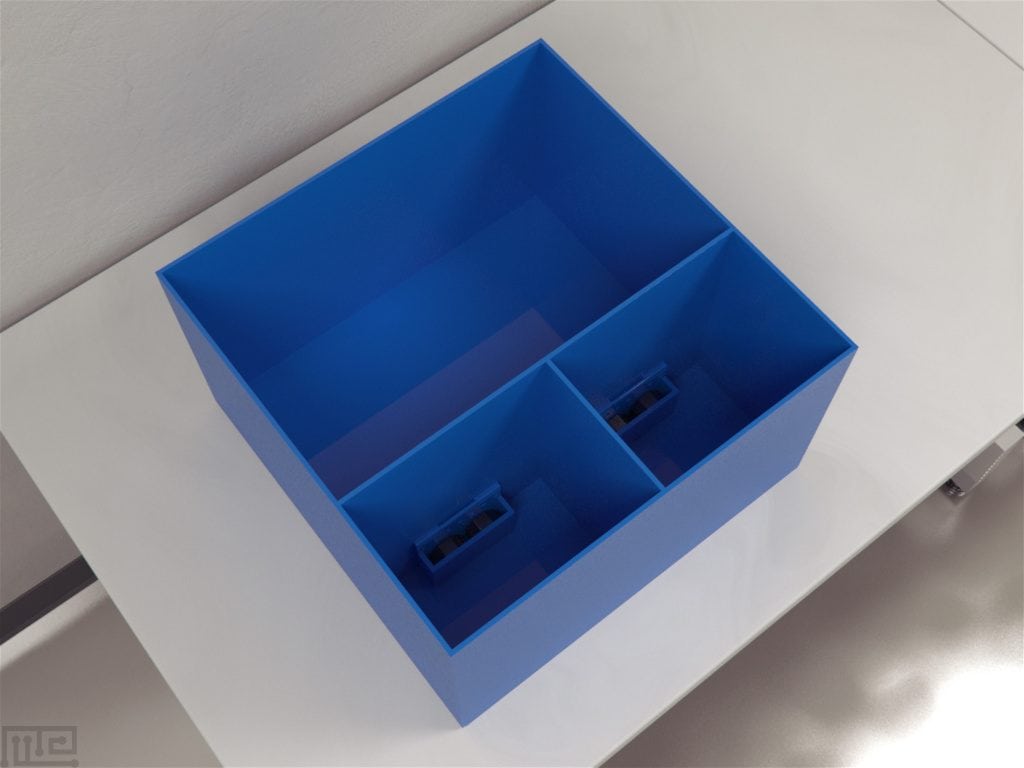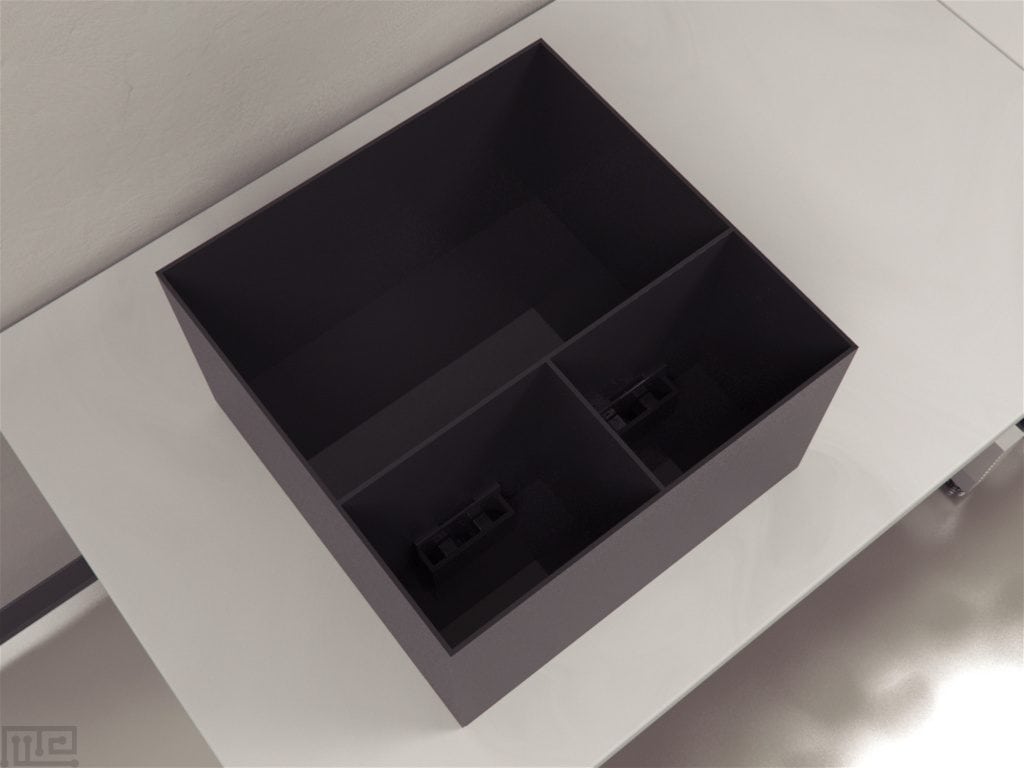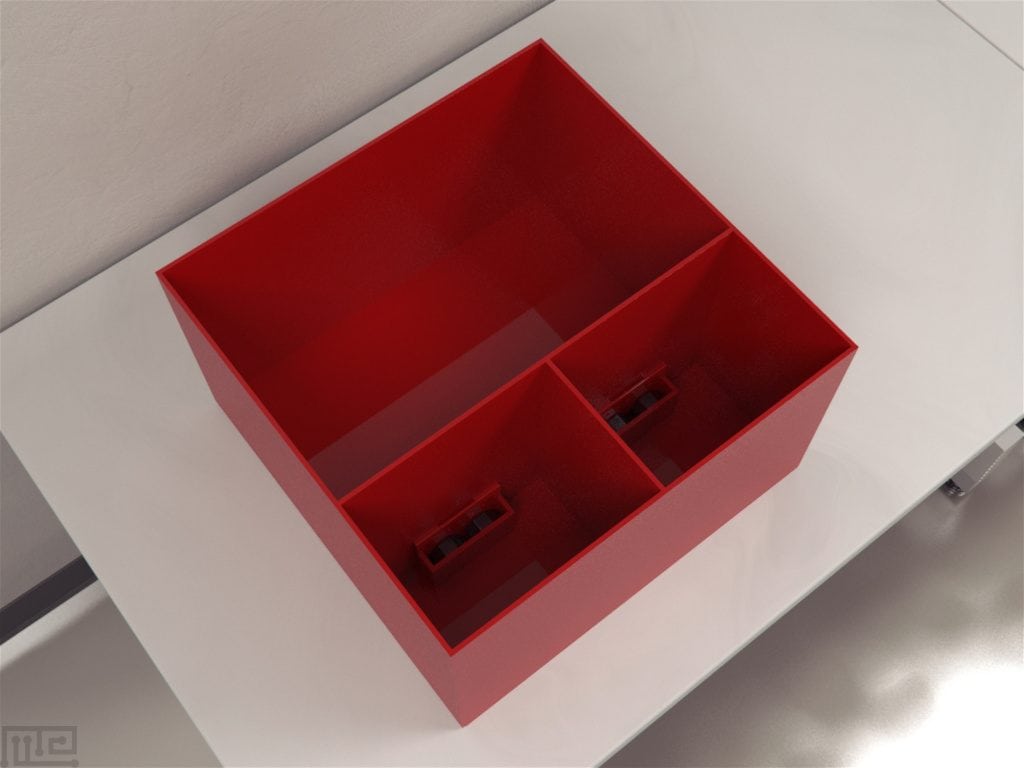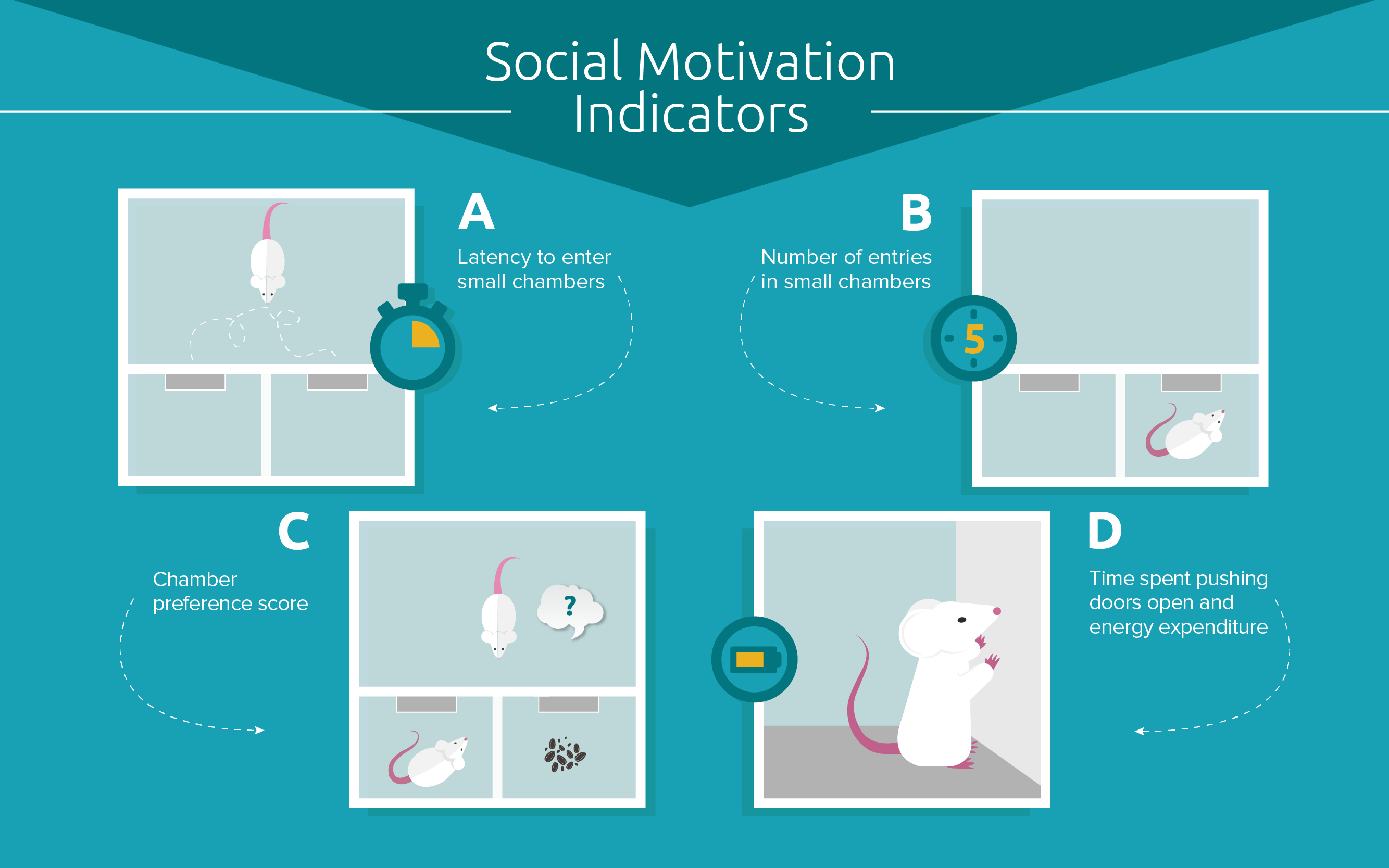Description
Operant social preference (OSP) is a novel task used to determine social preferences using a social reward chamber. The Social Reward Chamber is designed to understand the effect of social rewards on the social preferences of the subject. Unlike the existing models that are exclusively based on Conditioned Place Preference (CPP) paradigm and require memory association (Trezza et al., 2011), the Social Reward Chamber is based on Operant Social Preference (OSP) task that takes advantage of visual stimulus (Borland et al., 2017).
The apparatus makes use of clear acrylic chamber that is divided into one large and two smaller chambers that are separated by one-way vertical-swing doors. The doors can be weighted to increase the degree of effort required by the subject. The presence or absence of stimuli in the smaller chambers allows for the direct investigation of the effect of a social stimulus in reinforcing social interactions and in the quantification of reward value.
Social Reward Chamber model also makes for an excellent template, to base pre-clinical studies of psychiatric disorders, to assess the role of social rewards and mechanisms controlling social reward.
Colors available: Black/Blue/White/Grey/Red/Clear
Price & Dimensions
Mouse
$ 1190
+S&H- Chamber 1 ( Main +chamber)
- Length: 33 cm
- Width: 22 cm
- Height: 20 cm
- Chambers 2 & 3 size
- Length: 17 cm
- Width: 12 cm
- Height: 20 cm
- Door Size
- Length: 7 cm
- Width: 5 cm
- Height: 5 cm
- One way vertical swinging door separate Chamber 1 from 2 & 3
- Matted (opaque) doors
- Encatchments to attach weights
- Tungsten weights included in your order (x5 1/2 oz, x2 1/4 oz, x2 1/8 weights)
- Tungsten is 1.7x denser and smaller than lead
Rat
$ 1390
+S&H- Chamber 1 ( Main chamber)
- Length: 50 cm
- Width: 33 cm
- Height: 30 cm
- Chambers 2 & 3 size
- Length: 25 cm
- Width: 18 cm
- Height: 30 cm
- Door Size
- Length: 10 cm
- Width: 7.5 cm
- Height: 7.5 cm
- One way vertical swinging door separate Chamber 1 from 2 & 3
- Matted (opaque) doors
- Encatchments to attach weights
- Tungsten weights included in your order (x5 1/2 oz, x2 1/4 oz, x2 1/8 weights)
- Tungsten is 1.7x denser and smaller than lead
Documentation
Apparatus and Equipment
The Social Reward Chamber is constructed using clear acrylic and consists of three chambers. The largest chamber holds the dimensions 50.8 x 33 x 30.5 cm and the smaller chambers have the dimensions 25.4 x 17.8 x 30.5 cm.
A one-way vertical-swing door of length 10.2 cm and height of 7.6 cm each on the smaller chambers permits movement only from the largest to the smallest chambers. The doors are brushed with steel wool to create a distinction from the rest of the apparatus and are perforated to allow adequate air flow along with visual, auditory and olfactory cues. The doors are also equipped with weight holders on the smaller chamber side to allow assessment of reward value through its relationship with energy expenditure as the weights are added (Wirth et al., 2003).
Training Protocol
For testing, subjects are housed individually in humidity and temperature controlled solid-bottom Plexiglas vivaria in a reverse light-dark (LD) cycle of 14 hours of light and 10 hours of darkness. Food and water were provided ad libitum.
Subjects are acclimated four weeks prior to the experiments and are weighed before their first behavioral test and at the end of the last behavior test. The behavioral test is performed in the first three hours of the dark phase of the LD cycle under red light.
Operant Social Preference Conditioning
Operant conditioning is initiated by placing the subject in the larger chamber in the designated drop zone (10.2 x 7.6 cm) against the far wall at equidistance from the smaller chambers. A smaller, non-aggressive, same-sex conspecific is placed in either one of the smaller chambers as a stimulus. Throughout the experiment, it is ensured that the subjects do not interact with the same stimulus and assignment of stimulus to the chambers are counter-balanced. The subject is allowed 20 seconds after entry into either of the smaller chambers before returning it to the drop zone.
Initial acquisition session requiring the subject to enter the stimulus chamber at least 3 times extended over 10-30 minutes and additional sessions of 10 minutes are conducted if the criterion is not met; three social entries for two consecutive days. Weights on the door bucket are progressed from none (during the first 2 days) to 113g for the next 2 days during the testing. Subjects that do not meet the acquisition criterion or display submissive behavior in the presence of conspecifics are excluded from subsequent experiments.
In the OSP task, social motivation can be calculated by determining the four social motivation indicators.
- Latency to enter small chambers
- Number of entries in small chambers
- Chamber preference score
- Time spent pushing door open and energy expenditure
These indicators are recorded along with the following mutually exclusive behaviors with Noldus Ethovision XT.
- Duration of aggression (Frequency of attack scored as point event)
- Social investigation
- Submission (e.g. fleeing, avoidance)
- Grooming
- Non-social behavior (Frequency of flank marks scored as point event due to its strong link to dominance status and territoriality in rodents.
The locomotor activity is scored by counting the number of square entries (OSP apparatus divided into six equal sized squares). These behaviors are measured to assess time spent in the small chamber to aid conclusions about chamber entry behavior.
Evaluation of motivation under high energy expenditure
To investigate the reward motivation under higher cost requirement, OSP test sessions are conducted with progressively increasing weights in the weight bucket on the doors over consecutive days. Weights progressed in the order 113g (4oz), 227g (8oz), 340g (12oz), 454g (16oz), 634g (22oz), 794g (28oz).
Evaluation of non-social reward related behavior
To assess reward-related behavior, the conspecific stimulus is replaced by the food stimulus such as sunflower seeds. The food stimulus is maintained in the chamber throughout the test sessions and replenished if consumed by the subject.
Evaluation of Extinction and Reinstatement
To investigate the effects of social interactions on chamber preference, subjects are divided into two groups:
- Social exposure group: The subjects are tested with a stimulus conspecific in one of the smaller chambers. The first 7 consecutive days serve as acquisition training with the stimulus conspecific, and the next 3 days are extinction days where no stimulus is present and the final day reintroduced the stimulus conspecific for reinstatement test.
- No social exposure group: The group is not presented with a stimulus in the smaller chambers for all the 11 days of testing.
Data is averaged over the last 3 acquisition days and the 3 extinction days and used for behavior scoring to assess the relation between social behaviors and number of social entries or social preference.
Evaluation of social interaction versus non-social interaction on chamber preference
The subjects are divided into two groups one of which is presented with a stimulus subject, and the other with food exposure. The experiment is carried out in two parts. The first part involves investigating the acquisition of stimulus over empty chambers, and the second part involved the presentation of both the stimuli with varying weights on the doors.
Sample Data
Sample data for investigation of chamber preference of the subject can be visualized as follows. The plot shows a comparison between chamber preferences when the subject was presented with two chambers; a chamber with stimulus conspecific and an empty chamber.
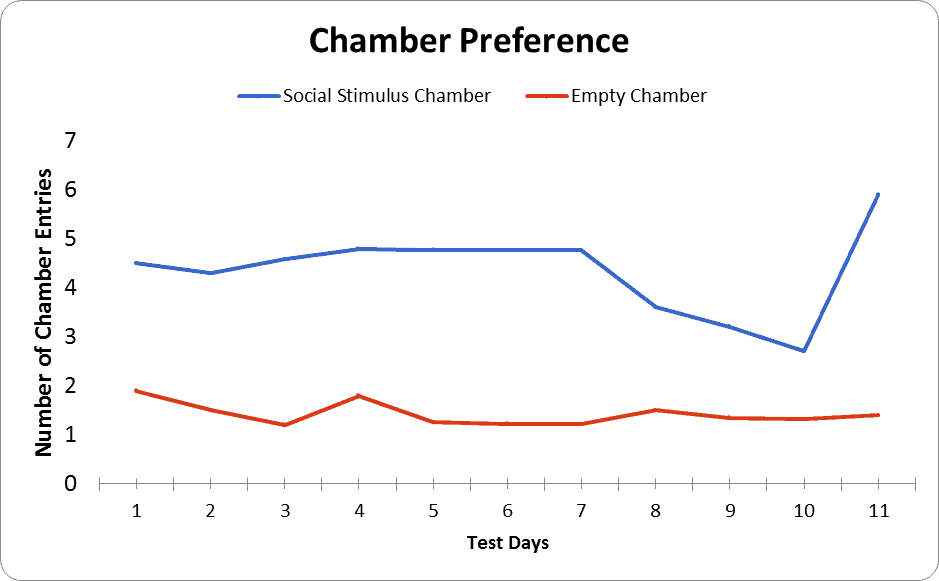
Strengths & Limitations
Strengths
Social Reward Chamber serves as an inexpensive model for the investigation of social interactions and reward value. By the elimination of memory component, it is easy to gauge the neural mechanism involved in controlling reward value association. Further, the model enables estimation of energy expenditure in presence of rewarding stimuli by measuring the work required to push the door.
Limitations
The number of chamber entries under high weight may be limited by the subject’s body weight and strength. Interestingly, it is countered by the OSP paradigm as social motivation is dependent on the time spent in pushing the doors open. The model is limited by the response of the subjects used. In case of submissive subjects, the experiments may not yield correct results.
Summary and Key Points
- The Social Reward Chamber apparatus is ideal for investigating neural mechanisms controlling rewarding properties of social and non-social interactions
- Operant Social Preference (OSP) enables measuring of social reward with a memory component.
- The provision of weight buckets enables assessing motivation under the high- cost requirement.
- The apparatus is easy to construct and inexpensive.
References
Borland JM, Frantz KJ, Aiani LM, Grantham KN, Song Z, Albers HE. (2017). A novel operant task to assess social reward and motivation in rodents. J Neurosci Methods;1; 287:80-88. Doi: 10.1016/j.jneumeth.2017.06.003.
Trezza V, Campolongo P, Vanderschuren LJMJ (2011) Evaluating the rewarding nature of social interactions in laboratory animals. Developmental Cognitive Neuroscience 1:444-58.
Wirth O, Gregory EW, Cutlip RG, Miller GR (2003) Control and quantitation of voluntary weightlifting performance of rats. Journal of Applied Physiology 95:402-412.

